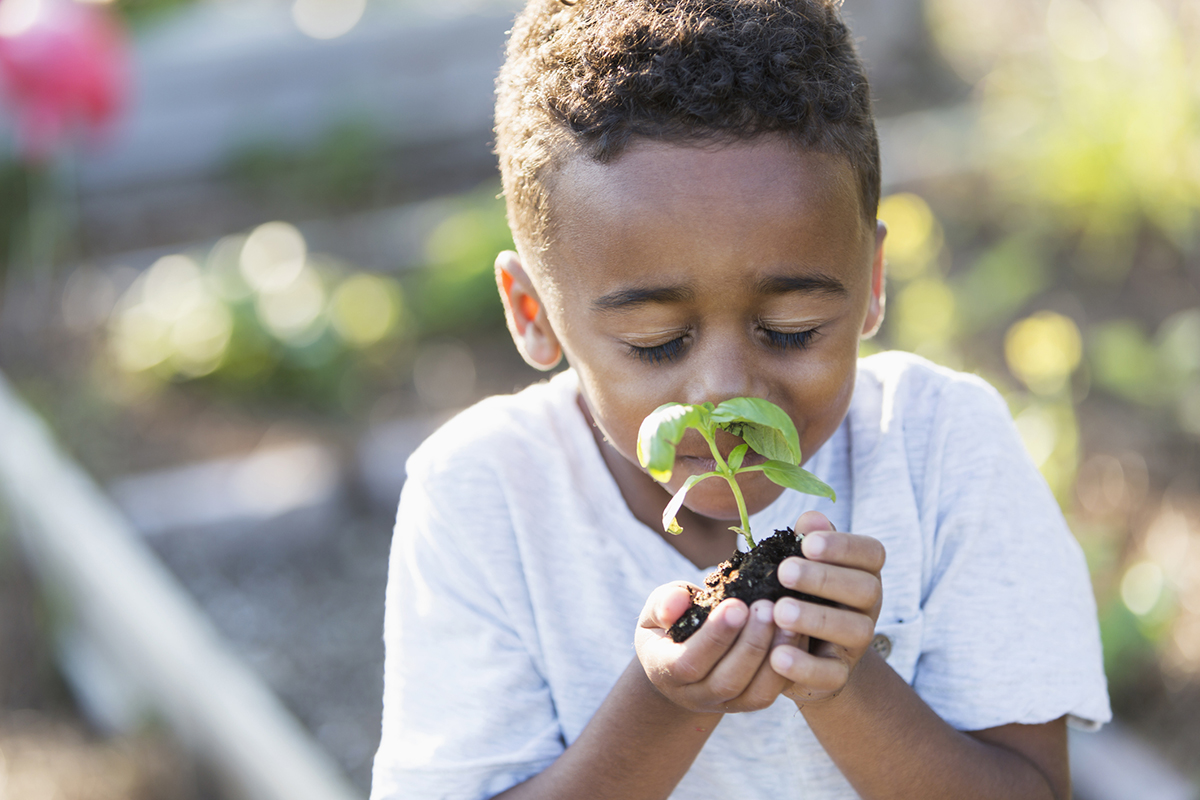BY DR. ANNA BALDINO / MONDAY, 22 JUNE 2020 / INDEPENDENCE BLUE CROSS
Need an activity to keep little hands busy this summer? Plant a vegetable garden and watch the good times — and food — grow.
Whether it’s large or small, inside or out, a garden can be a magical place for a child. Loads of time can be spent finding containers for pots, packing dirt, and planting seeds. It only takes a few days for sprouts to appear, and a handful more for plants to take shape. And the best part? Your child will be growing healthy, delicious food while learning countless lessons that he or she will use throughout life, including:
- Patience — In a world where gratification is immediate, a garden teaches us to slow down.
- Responsibility — Regular care and upkeep are essential for a successful garden.
- Math, science, and fine-motor skills — From counting seeds to filling pots to measuring seed depth, a garden is full of teachable moments.
Where to Plant Your Garden
Size doesn’t matter when it comes to gardens. If you have a sunny windowsill, you have all the space you need.
Don’t have a pot? Look no further than your recycling bin for some cool plant containers. Need dirt? If you’re planting in pots, you may only need a bag or two of potting soil. You can find it at your local garden center or hardware store. If you’re planting in your yard or community garden, be sure to review Growing Safely in Urban Soil to ensure your dirt is free from contaminants.
What to Plant in Your Garden
When it comes to deciding what to plant, consider what you and your child like to eat and what will grow well in your space.
If you are planning an indoor garden, put these fruits and vegetables at the top of your list. Not only do they grow well indoors year-round, but they are also self-pollinating, meaning they don’t need help from bees or wind to produce fruits or vegetables.
- Herbs (basil, cilantro, dill, mint, oregano, parsley, etc.)
- Lettuce
- Microgreens
- Potatoes
- Radishes
- Scallions
- Spinach
- Strawberries
- Tomatoes
Need seeds? Your local hardware store or garden center should have plenty to choose from, or you can explore ways to get free seeds for your garden. If you want to get really creative with your garden, you can grow vegetables from scraps of vegetables you have already eaten.
What to Do While You Wait
Once you’ve planted your garden, there are still plenty of projects to do (aside from watering and weeding). It is the perfect time to:
- Make DIY plant labels or draw a map of your garden. (You’ll be surprised how easy it is to forget what you planted and where.)
- Have younger children color or draw pictures of their garden.
- Read children’s stories or how-to books on gardening.
- Find simple recipes your child can help you make using vegetables from your garden, like this spaghetti with Burst Cherry Tomatoes.
- Decorate your garden with these gardening crafts for kids.
A garden offers much more than just fresh food. It is a place of learning and delight. It encourages us to slow down, work hard, have patience, and appreciate the enormous potential of the tiny things around us.
“You can plan ahead, but the unexpected will happen, and it’s not always a bad thing. Many things grow in the garden that were never sown there.” – Thomas Fuller, Gnomologia (1732)


